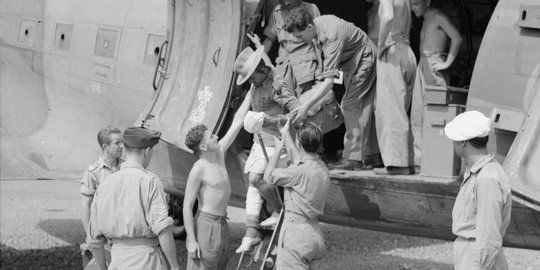
In the 1970s, in Ciranjang, Cianjur area, West Java, no one did not know Mang Basin. The man with slanted eyes with a stocky body and hard face was known as a traveling vendor that sold woven bamboo for the walls of traditional houses.
Before he died in the 1990s, he was a school custodian at an elementary school.
Basin was not just any booth merchant. In fact, he was a Nepalese who had been a member of the Royal Gurkha Rifles (RGR) from Battalion 3/3rd Division 23rd The Fighting Cock (Rooster Division). December 1945, Basin and his colleagues were assigned to secure the route along Cianjur-Bandung from Indonesian guerrillas.
At the end of March 1946, Yon 3/3 Gurkha Rifles engaged in brutal fighting with Indonesian guerrillas on the cliffs of Ciranjang near the Cisokan River. Victims fell on both sides. Five Gurkha soldiers became prisoners of war including Basin.
"Then we held them somewhere, but we treated them humanely," said Raden Makmur, a former Indonesian guerrilla from the Indonesian Bull Front (BBRI).
For five months the five Gurkha soldiers were held captive by the Republicans. They were later released in exchange for dozens of Indonesian guerrillas detained by the British military. But Basin refused to return to his troops. He chose to join the Republican side.
Basin then became an aide to Wedana Ciranjang until the war ended in 1950.

Stories about captured Gurkha soldiers also occurred at the Cikampek front. The story was that on November 21, 1945, TKR troops from the Cikampek V Regiment led by Lieutenant Colonel Moefreni Moe'min managed to destroy a platoon of Gurkha Rifles troops, logistical train guards and ammunition to Bandung.
"A British lieutenant died in the incident. Only six Gurkhas were still alive," said A.E. Kawilarang in For the Red and White (written by Ramadhan KH).
The British tried to get back their captured soldiers. They then urged the government of the Republic of Indonesia to ask its soldiers to release the six Gurkha Rifles soldiers. Finally a middle ground was found: the four Gurkha prisoners could be released as long as they were exchanged for eight key Indonesian prisoners. One of them is the poet Chairil Anwar. The middle ground proposal was later approved by the British army leadership in Jakarta.
The TKR Headquarters assigned Lieutenant Colonel A.E. Kawilarang as the representative of the Republic in charge of the prisoner exchange. In his autobiography, Kawilarang describes how he met the famous soldiers during World War II.
"When I entered the head office of Jatinegara Station, I was greeted by the six Gurkha soldiers who immediately stood up while simultaneously shouting the word "freedom", recalled Kawilarang.
Apparently while in detention the Indonesian fighters from the Cikampek V Regiment, they learned the habits of the Republicans. Of course it was done to keep them safe.

** Your post has been upvoted (11.00 %) **
Curation Trail is Open!
Join Trail Here
Delegate more BP for bigger Upvote + Daily BLURT 😉
Delegate BP Here
Upvote
https://blurtblock.herokuapp.com/blurt/upvote
Thank you 🙂 @tomoyan